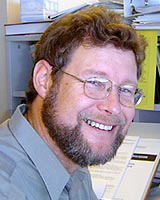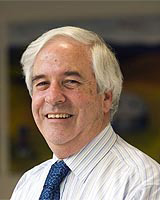Introduction
Expanded scope roles are emerging globally among medical, nursing and paramedical disciplines as a response to health workforce sustainability problems1-3. Expanded scope roles have practitioners applying skills and protocols for which they were not originally trained. For paramedics, who have advanced emergency care skills, there have been increasing efforts to re-examine their role in rural areas.
This article addresses one aspect of a larger study, which examined multiple cases of rural expanded scope innovation in Australian paramedic roles in order to develop a model of rural expanded scope paramedics (ESP)4. Community engagement was a key aspect of the rural ESP, and the present article explores how paramedical community engagement occurs and how it contributes to both primary health care and overall improved emergency response capacity in rural communities.
Despite the United States' EMS Agenda for the Future identifying that the future of emergency medical services would be community based and integrated, most expanded scope innovations have focused on direct clinical care, such as advanced life support or trials of treatment in the home3,5-7. This is not surprising given that the traditional components of the paramedic role are clinical: emergency medical response, pre-hospital care, non-emergency transport, and major incident and disaster preparedness. There is consequently little literature on how ESP can undertake community engagement activities, such as health promotion, capacity building, and community development, and how these activities can benefit rural communities.
Expanded scope roles for paramedics have evolved in Australia's rural areas because of the difficulties associated with delivering pre-hospital services to populations that are geographically sparse but still in need of fast-response pre-hospital services8. Australian ambulance services have responded largely by supporting local volunteer teams or by the appointment of full-time staff, with additional support of air ambulance services9,10.
These models of service delivery, however, have problems related to sustainability and the maintenance of standards. There are, for example, increasing sustainability issues with the 5000 Australian operational ambulance volunteers in terms of retention and hours committed10-13. In addition to gaps in roster coverage, ambulance volunteers have suffered some historical 'neglect', leaving them at times under-equipped and insufficiently trained, a situation found with other service volunteers14,15. Increasingly organizations understand that volunteers need quality management and organizational support16,17.
The alternative of rural services manned by full-time staff also has difficulties caused by low case loads and high levels of down-time. The situation is not cost-effective and has staff retention, job-satisfaction and maintenance of service standards problems18. Air ambulance services are a valuable but high cost solution.
This study examined previously poorly documented Australian innovations for their important and common features, and found community engagement to be a major part of a rural expanded scope role. Community engagement is considered an important aspect of primary health care because it allows collaborations of people to address issues that influence their wellbeing through a sharing of responsibility, power and resources19-21. In the context of this article, community engagement is about the collaboration between ESP and rural communities to address health issues. By focusing on the details of community engagement, this article contributes to understanding how ESP can improve rural health services through successful collaborations.
Methods
This Australian study examined four cases where each ESP role provided a distinct case for description and analysis. The case study approach allowed researchers to capture the complex and interconnected situation of rural paramedical service. Multiple case sampling increased confidence in the findings as examples of ESP and their benefits were found across cases22,23. The in-depth nature of the case study data collection allowed inclusion of all relevant inter-professional interactions and important cultural factors.
The study was undertaken in partnership with Australian ambulance services, and the sampling framework incorporated one purposively selected case per partner ambulance service. Each of the four ambulance services was asked to propose one or two examples of rural ESP, and the research team further selected cases on the basis of maximising case variety.
Within each case, three sources of data were collected and analysed: (i) semi-structured interviews with up to 17 key informants in each of the four sites; (ii) observation of key processes and events; and (iii) review of documents that described the paramedic role and the available organizational and educational support. Ethics approval was obtained from three Australian universities for this study, and interview participants gave consent for interviews. Confidentiality was assured. Data were collected by paramedic research assistants using an interview guide and a list of desired documents; interviews were taped and transcribed. Data were triangulated to guard against interviewer bias or inaccuracy23.
Inductive data analysis of each case was undertaken by the research team, with discussion about suitable themes and data categories. This step was followed by cross-case analysis, which highlighted common features of the ESP roles. Four overarching themes emerged: (i) community engagement; (ii) clinical response; (iii) scope of practice extension; and (iv) educational requirements.
Community engagement is the topic of this article and the other themes will not be discussed. Community engagement was a major design element for one case, an evolving element for two cases and a 'desired but not achieved' element for one case. Each case study demonstrated varied aspects of community engagement and two cases (A and B) had defined responsibilities for volunteers. In case A the ESP had the most clearly documented and comprehensive responsibility for volunteers, which included recruitment, training and organisational and managerial support that would assist in retention. In case B the ESP managed four volunteer-only stations and, therefore, there was less capacity for intense volunteer training and support. Clinically, the ESP in cases A and B attended only events of moderate to major severity in order to prevent too much overlap with volunteer responsibilities. Case C involved two fully staffed paramedic units without a clear brief to initiate community engagement despite a desire for this at the top management level. Case D involved an ESP role that attended emergencies in the local hospital during the absence of the local medical practitioner. This ESP role was quite narrowly defined and had little specified community engagement elements, but emerged from community networking.
Results
Expanded scope paramedics can engage with communities at the level of the general public, local committees, and local ambulance volunteers. Expanded scope paramedics community engagement promotes the health of rural communities in three key ways, by: (i) increasing community response capacity; (ii) linking communities more closely to ambulance services; and (iii) undertaking health promotion and illness prevention work at the community level.
Emergency response capability
Rural community members describe a greater sense of confidence in their emergency capability as a result of the ESP role. This confidence came about not only by having practitioners with a high level of emergency medical response skills based in the community, but also through increasing local skills and technical expertise. Expanded scope paramedics provided first-aid training for the general public and also significant support for rural volunteer teams, increasing both their capacity and sutainability.
The ESP helps maintain sustainable volunteer teams through effective leadership and management, linking volunteer teams more closely with metropolitan based ambulance systems, and by providing clinical training and support. Recruitment of local volunteers improved with the introduction of ESPs. One volunteer team increased in size from 3 to 11 members, and other teams also noted improvements in recruitment. In two of the case studies, ESP generated higher numbers of volunteers with an increased repertoire of clinical skills.
...it didn't matter how much we appealed or how many advertisements we put in our magazines we couldn't get them. Then the paramedic comes and mate, s/he is knocking them back... (A.2 committee member)
Ambulance volunteer skills and capacity were further enhanced because the presence of the ESP allowed volunteers to work to the full extent of their own scope of practice. Other community members noted the increase in volunteer capacity and confidence, and volunteer interviewees noted how they were able to extend their own skills:
Obviously the education of the volunteers. They're obviously much more confident, and capable than they ever were before there was a paramedic here. (B.3 medical practitioner)
Before, we used to hand the patient onto the paramedics from town and the paramedic would go on with the patient so we wouldn't see anyone cannulated or any advanced care. Now it is better because our skills have become more advanced by being able to help out more, for example helping to set up for cannulation or with IVs. (B.6 ambulance volunteer)
Volunteers appreciated having paramedic clinical back-up on significant cases; they felt they gained in confidence and skills and felt less stressed by not having the full burden of responsibility. The increased confidence provided by having a highly trained professional as back up for critical cases was a major benefit of the ESP role. Without this back up:
...there was always that nagging [thought] that we were going to collect something we can't handle. (A.7 ambulance volunteer)
These data also suggest that providing clinical support to volunteers requires well-balanced judgement by the ESP. Volunteers operate to the protocol level allowed and appreciate having some cases that they manage alone, freeing up the highly trained paramedics so that they do not need to travel to all cases. Decisions about which cases to attend involved ensuring that volunteers still had an adequate level of responsibility and satisfying job loads, and that paramedics do not 'take over' to the point where volunteers have no responsibility.
Volunteer team sustainability was also attributed to the leadership and management skill of ESPs. These data show that the paramedic needed to deal with conflict or poor relationships within volunteer groups, or between volunteer groups and local health providers. In some situations the paramedic was able to deliver fairer rosters, allocate resources more evenly, and generally resolve disputes.
S/he blends us together, s/he makes sure that we get fair treatment in terms of rostering, in terms of other tasks and people get their hands on a lot of different parts of the role. (A.3 ambulance volunteer)
The success of the ESP leadership and management role, therefore, depends partly on the social and communication skills of the paramedic.
Strengthening links between rural communities and services
The ESP role also facilitated appropriate utilisation of ambulance services at both the community and service-provider level, and improvements in local infrastructure and equipment.
The data suggested that prior to the ESP role, rural community members were reluctant to fully utilise the ambulance services. Interviewees attributed this reluctance to a rural attitude of 'not wanting to be any trouble' and/or not understanding the full capability of the ambulance system.
One thing, especially with Town A, there seems to be this under usage I feel of the ambulance service. You know, like if someone is sick, 'Oh, I don't think I want to disturb the Ambulance', you know, 'Oh I'll wait and see what happens' . (B.4 community member)
The ESP attempted to resolve some of these issues of ambulance service usage by promoting use of the correct number to ring in an emergency. In addition, some paramedics promoted the appropriate use of air ambulance and associated retrieval systems by encouraging the use of air services for eligible (instead of only critically ill) patients, and increased the general community knowledge about when to use the air ambulance.
I think also the people here have become used to being isolated and perhaps letting them know that you could access different services if you chose to jump on an aircraft. ...to try and educate some of the local health providers about accessing the different specialists in the city centres, perhaps for primary care. (A.5 ESP)
I don't think anyone ever realized that we could just do it so easily... I think everyone was very reluctant to ever call an air ambulance... (A.2 committee member)
Expanded scope paramedics also worked with community groups such as ambulance auxiliaries to help direct their fund raising efforts. While rural communities often work to fund raise and support local ambulance services, the ESP role gave them focus and direction:
I found that initially my first three years with the [ambulance] auxiliary, I found it very disjointed. ... We just seemed to have no real focus...one, we were raising money and two, what the hell are we going to spend it on because we were on our own with only three volunteer ambulance drivers and ... we had all this money and nothing really to spend it on, or no one to give us any guidance. So the last twelve months with a fulltime paramedic it has just turned that around. We're focused and it's just more professional. (A.2 committee member)
The ESP role allows the paramedic to link with communities to ensure their efforts are more effective and targeted. They provide an important information linkage between communities and pre-hospital care, and bring higher level expectations of the standard of care. This study suggests that ESP community engagement is more decisive for health when structures such as ambulance auxiliaries or community health committees exist.
Health promotion and illness prevention
Paramedics in the ESP role undertake health promotion and illness prevention work targeted to fit the needs of local communities, and are seen by rural communities as a valuable health information resource. These data suggest that paramedics are seen to be very accessible and are consulted for general health care information, not just for emergencies:
Locals will say, oh, that's where the paramedic lives, I've got this, or I've got that, I'll just go see what the paramedic says. (B.3 medical practitioner)
With health education for instance, I get on the local radio now and then and talk about some health issues. (B.5 ESP)
In particular, paramedics address injury prevention by providing information and education programs. These data suggest that ESP have strong credibility within the community on matters of injury prevention. They are well placed to observe the frequency of incidents within a geographic area, and to deliver targeted injury-prevention programs of relevance to local needs:
S/he is also on our road safety committee, and s/he has designed a mock crash, again, showing the youth what can happen, a big part of our planning. (B. 1 committee member)
...there is probably not much point in us you know, going out into the community and teaching things like jelly fish stings and envenomation etc. etc. but out here there is an enormous relevance for things like organophosphate poisoning which you very rarely see in the major centres, but which you very often see out here... (C.3 ESP)
Health promotion work also occurred through involvement in committees. Committee membership was common among ESP, ranging from road safety task force committees to key social and sporting groups. This type of community engagement was more likely when the ESP lived in the town, embedded in community life, in a way that relieving paramedics had difficulty emulating. Through a strong presence on committees and in working with local groups, some of the paramedics established themselves as leaders within the community and represented health as key stakeholders.
...s/he's worked with community groups like the elderly citizens, kindergartens, schools, other emergency services, etc and I think that is continually developing. (A.2 committee member)
Across the four cases the degree of health promotion and illness prevention work was facilitated by a job description that included detailed expectations about community interactions, and by having ESP with good communication skills.
Discussion
This article describes how an ESP role is augmented by community engagement, thereby providing a cost-effective ambulance service model for regional and rural areas. The qualitative interview data suggest that ESP can improve health care for rural communities in three key ways, by: (i) increasing community emergency response capability; (ii) improving linkages between communities and ambulance services; and (iii) locally targeted health promotion and illness prevention work. These results are consistent with understandings of the benefits of community engagement in terms of sharing resources and expertise21.
Each of these activities provides health service benefits for rural communities that are not part of a traditional paramedic role, and for which paramedics receive little training. While it is known that rural populations have less access to health services24, this study suggests ways in which access can be increased. Understanding that a rural 'make do' attitude combined with lack of system knowledge may contribute to service underutilisation indicates how health service utilisation can be increased without extra workforce numbers. Improved service knowledge also led communities with an ESP to feel more confident in local skills, local equipment and use of the pre-hospital system.
Rural communities value having access to emergency medical care25,26, and so an increase in emergency capability is highly valued. Supporting volunteer teams to provide pre-hospital services is a cost-effective partnership with communities which prevents ambulance services from having a costly underutilisation of professional staff. This approach combines the high level clinical skills of the paramedic with the advanced first-aid skills of the volunteers, thereby providing communities with better service coverage for complex and acute cases.
When the ESP takes a leadership role, volunteer recruitment and training standards improve and team conflict decreases. The resourcing of volunteer management and support within volunteer-using organisations is often inadequate16, because the 'helping' nature of volunteer labour allows the cost of supporting and involving volunteers within organisations to be overlooked or underestimated27. With ESP providing the management and organisational support that viable volunteer groups need16, the volunteer experience becomes more enjoyable and satisfying.
The benefits to healthcare consumers from the ESP community engagement are: an improved access to care for those with emergency needs, and an increased confidence within rural communities that suitable emergency care is available. In addition, ESP models can bring a preventative focus to local accident and emergency health services. This is an important benefit for rural communities with their higher mortality rates from accidents28.
Community engagement benefits are contingent on the paramedic having good interpersonal and management skills, and clearly defined community interaction goals. It is clear from previous studies that a poor set of such skills can create conflict and retention difficulties within volunteer teams10. Currently leadership and management skills training are not provided to ESP, and services rely on paramedics having a strong set of personal skills in this area. Careful selection for ESP positions and appropriate training will be important prerequisites of a successful ESP role to capture the full extent of community engagement benefits.
Study limitations
The study was conducted in four Australian sites, and this article draws strongly on the data from two of the cases. The ESP roles and practitioners were unique to each site, and the study did not aim to produce findings that could be generalized to every setting. The study gathered in-depth, context-specific data that allowed exploration of ESP roles for core interactive elements that could comprise a model. The benefits of the study come from the insights this in-depth data generated, and the contribution to theoretical development in community engagement.
Conclusion
The ESP is able to augment access to a higher quality and more equitable ambulance service for rural communities through community engagement. This study found that the ESP role facilitated the use of the full capacities of the ambulance system, and an increase in local clinical capabilities for pre-hospital health care. A distinctive feature of two cases was that the gains did not come from the paramedic attending every case, but through the transfer of knowledge and skills to other community members.
Expanded scope paramedics can perform an important role in linking rural communities with urban-based health services, and in increasing general community capacity. Leadership, management and communication skills are important for paramedics undertaking expanded scope roles, and should be considered in any future ESP curriculum. This knowledge can inform the development of other rurally based expanded scope practitioner roles. As health services look to gain maximum efficiency from the health workforce, understanding the intensification of effort that can be gained from practitioner community coalitions provides important future directions.
Acknowledgements
The researchers would like to thank the Australian Council of Ambulance Authorities Incorporated who provided funding for this project, and the paramedic research assistants Kristina Davis, Peter Mullholland, Paul Jennings, and Denis Wray.
References
1. National Health Service. Right Skill, Right Time, Right Place: the ECP report. London: Department of Health UK, 2003.
2. Productivity Commission. Australia's health workforce. Research Report. Canberra: Australian Government, 2005.
3. National Highway Traffic Safety Administrator. Emergency medical services agenda for the future. (Online) 1996. Available from: www.nhtsa.dot.gov/people/injury/ems/agenda/emsman.html (Accessed: 29 August 2006).
4. O'Meara P, Walker J, Stirling C, Pedler D, Tourle V, Davis K et al. The rural and remote ambulance paramedic: moving beyond emergency response. Bathurst, NSW: School of Public Health, Charles Sturt University; 2006.
5. Cooper S, Barrett B, Black S, Evans C, Real C, Williams S et al. The emerging role of the emergency care practitioner. Emergency Medical Journal 2004; 21: 614-618.
6. Mason S, Wardrope J, Perrin J. Developing a community paramedic practitioner care support scheme for older people with minor conditions. Emergency Medicine Journal 2003; 20: 196-198.
7. Woollard M. The role of the paramedic practitioner in the UK. Journal of Emergency Primary Health Care 4: 990156. (Online) 2006. Available: http://jephc.com/full_article.cfm?content_id=337 (Accessed: 3 December 2007).
8. O'Meara P. Professional and community expectations of rural ambulance services in Australia. Pre-hospital Immediate Care 2001; 5: 27-30.
9. O'Meara P. Models of ambulance service delivery for rural Victoria. [Doctoral Thesis]. The University of New South Wales, Sydney, NSW, 2002.
10. Fahey C, Walker J. Emergency services in Australia and New Zealand: problems and prospects for volunteer ambulance officers. Hobart, TAS: University of Tasmania, 2002.
11. Australian Government Productivity Commission. Report on Government Services 2006. (Online) 2006. Available: http://www.pc.gov.au/gsp/reports/rogs/2006 (Accessed: 12 February 2007).
12. Fitch J. Endangered species: volunteers. Emergency Medical Services 1994; 23: 38-46.
13. Morrissey J. Here to stay?: Recruiting EMS volunteers. Journal of Emergency Medical Services 1993; 38: 53-58.
14. Fahey C, Walker J, Lennox G. Flexible, focused training keeps volunteer ambulance officers. Journal of Emergency Primary Health Care 1: 990017. (Online) 2003. Available: http://jephc.com/full_article.cfm?content_id=31 (Accessed: 3 December 2007).
15. Baldock CV. Volunteers in Welfare. Sydney: Allen & Unwin, 1990.
16. Brudney J. The effective use of volunteers: best practices for the public sector. Law and Contemporary Problems 1999; 62: 219-256.
17. Grossman JB, Furano K. Making the most of volunteers. Law and Contemporary Problems 1999; 62: 199-218.
81. Raven S, Tippett V, Murdoch J, Stevens J, O'Brien A. Expanded Paramedic Health Care Roles in Rural and Remote Communities. In: Proceedings, 9th National Rural Health Conference: standing up for rural health - learning from the past, action for the future. 7-10 March 2007; Albury, NSW, Australian. National Rural Health Alliance, 2007.
19. Wass A. Promoting Health: the primary health care approach. Sydney: Harcourt Brace,1994.
20. Fawcett SB, Paine-Andrews A, Francisco VT, Vliet M. Promoting health through community development. In: Glenwick DS, Jason LA (Eds). Promoting health and mental health in children, youth and families. New York: Springer, 1993.
21. Butterfoss FD, Goodman RM, Wandersman A. Community coalitions for prevention and health promotion. Health Education Research 1993; 8: 315-330.
22. Miles M, Huberman M. Qualitative data analysis: an expanded sourcebook, 2nd edn. Thousand Oaks: Sage,1994.
23. Yin RK. Case study research: design and methods, 2nd edn. Thousand Oaks: Sage,1994.
24. Australian Institute of Health and Welfare. Rural, regional and remote health: indicators of health. Rural health series no 5. (Online) 2005. Available: http://www.aihw.gov.au/publications/phe/rrrh05/rrrh05-c00.pdf (Accessed 10 August 2006).
25. Strasser PR, Harvey D, Burley M. The health service needs of small rural communities. Australian Journal of Rural Health 1994; 2: 7-13.
26. Humphreys J, Rolley F. Health and health care in rural Australia. Armidale, NSW: University of New England, 1991. (Monograph)
27. Fahey C. Volunteers in an Organisational Setting: a critical discourse analysis of identification and power. In: T Le, C Hiller, K McPherson (Eds). International conference on critical discourse analysis: theory into research 15-18 November 2005; Launceston, TAS, Australia. University of Tasmania, 2006; 203-209.
28. Australian Institute Health Welfare. Rural, regional and remote health: information framework and indicators, vers 1, rReport no PHE 44. Canberra, ACT: AIHW, 2003.




